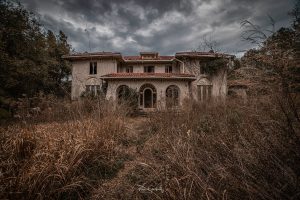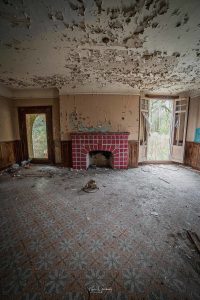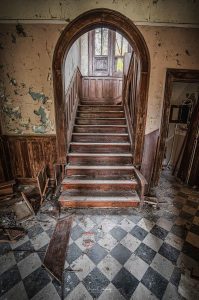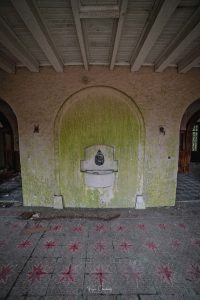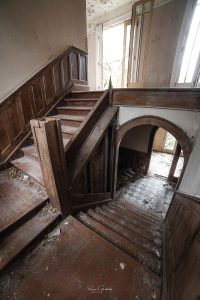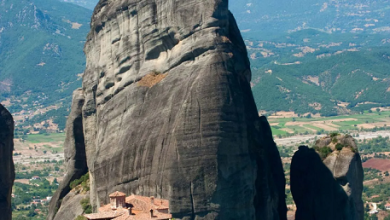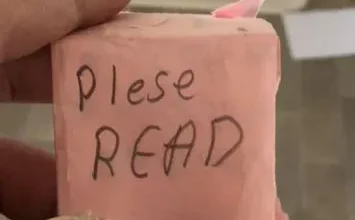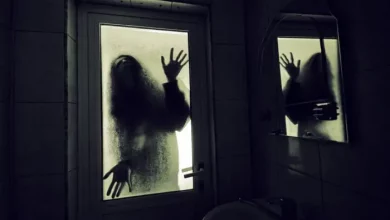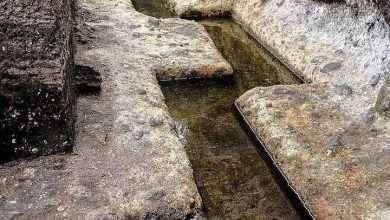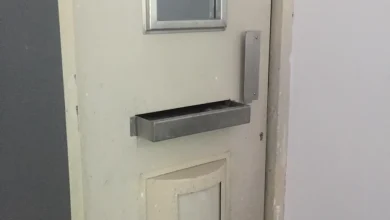Outlaw House-Alabama
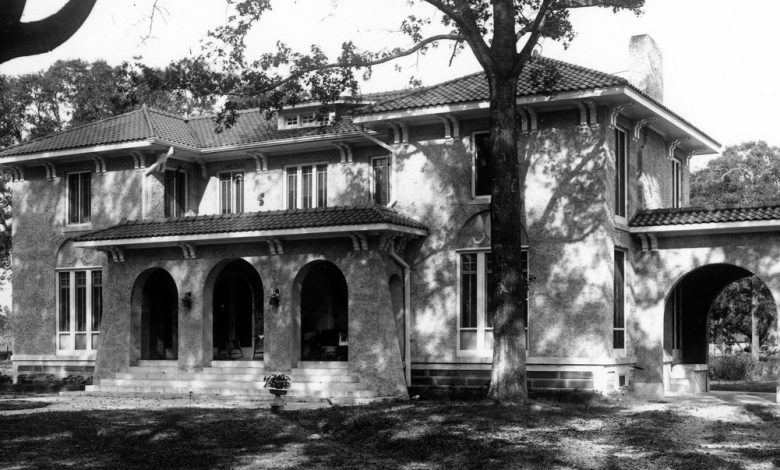
Outlaw House
Known as the Outlaw House, this house was constructed in 1914 and designed by local architect George Bigelow Rogers in the Spanish Colonial Revival style of architecture. Rogers is recognized for bringing this style to Mobile in 1904 with the George Fearn House. He also designed the highly elaborate Government Street United Methodist Church which is considered one of his finest works. Rogers designed many of Mobile’s notable historic structures, most of which are listed on the National Register of Historic Places including the Murphy High School Complex, the Bellingrath Gardens and Home, The Dave Patton House, and the Van Antwerp Building.
Although it’s unknown who the home was constructed for, the property was acquired by G. C. Outlaw sometime in 1925. According to local legend, he acquired the property in a poker game. At the time, the house included 120 acres of land where he built a lake known as Outlaw’s Lake by constructing a dam to stop the flow of a natural spring. The dam was used to generate electricity, the first in the area to have electricity and a telephone, which he later expanded by supplying other houses in the area. Down in the basement, an oil furnace provided heat and it was even said that there was an underground tunnel that went from the basement to the lake across the street.
In the 1940s, G. C. Outlaw moved to the city along with his wife Mayme Ricks, and their two sons, George Cabell Jr., and Arthur Robert Outlaw.
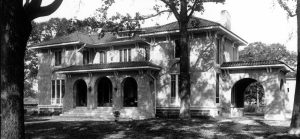
A period photo of the Outlaw House, courtesy of Tom McGehee, museum director of the Bellingrath Gardens and Home. Architect George Bigelow Rogers designed both landmarks
Arthur Robert Outlaw
Arthur Robert Outlaw was born on September 8, 1926. He attended Catholic schools in Mobile and graduated from the McGill–Toolen Catholic High School in 1945. He enlisted in the U. S. Air Force Cadet Program, serving for two years during the last months of World War II and afterward. After returning to Mobile, he attended the University of Alabama for one year and received his business degree at Spring Hill College.
In 1951, Arthur started working as an auditor in his father’s business, Morrison’s Restaurants. He and his father continued to develop the business together during the next two decades when it became the largest cafeteria chain in the nation. He advanced to serve as the vice-chairman of the board and director of Morrison Restaurants, Inc. after his father’s death in 1964.
Arthur entered politics in 1965, serving as the Public Safety Commissioner of the city of Mobile until 1969 when he returned his attention to his various business endeavors. The government at the time had three non-partisan commissioners elected at large, each with specific responsibilities. In addition, they rotated the position of President of the Commission/Mayor for one-year terms during their service on the commission. Because of this, Arthur also served as Mayor of Mobile between 1967 and 1968.
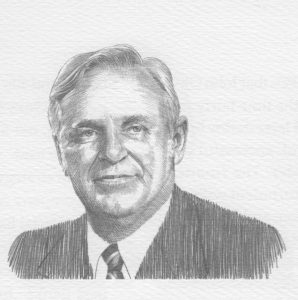
Sketch of Arthur Robert Outlaw. Alabama Business Hall of Fame
After several years in business, he returned to politics, being elected as Finance Commissioner of the city in 1984. Running as a Republican, Arthur was elected Mayor in 1985. As mayor, he was committed to investment in downtown Mobile to stimulate redevelopment and attract new businesses. His administration proposed the construction of a convention center in 1987. It was part of a 15-year plan for redevelopment.
He lost re-election in 1989 to Mike Dow who promoted himself as a new-style candidate, reaching out to both black and white voters. Dow’s campaign included a coalition of African-American ministers and he frequently attended mass at African-American churches throughout the city. He also campaigned against the construction of the convention center. Dow’s victory was based on his support among middle-class white voters and African Americans while Arthur Outlaw carried the upper-class white vote. Despite campaigning against it, he helped carry out Outlaw’s 15-year plan for downtown Mobile, including the construction of the convention center which was named the Arthur R. Outlaw Mobile Convention Center in his honor.
In the 1960s, Arthur renovated the old Outlaw home and leased the property to the local police chief. He later moved into the house with his family in the 1980s. In order to run for Mayor of Mobile though, and to avoid any conflicts, he and his family moved within the city limits, leaving the Outlaw House vacant ever since. On the morning of July 9, 2021, the Outlaw House was destroyed in a fire and what remained of the home was demolished on December 1, 2021.
